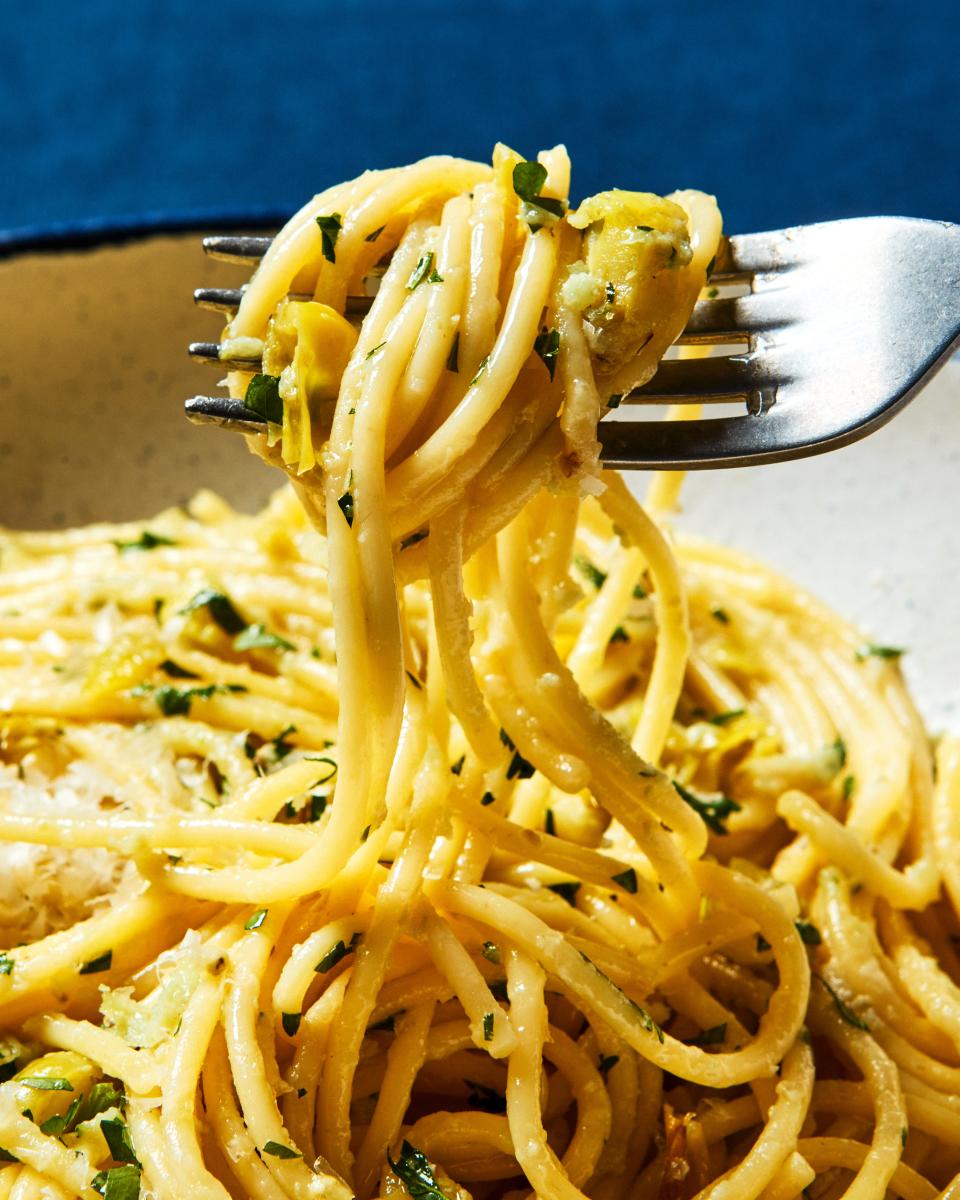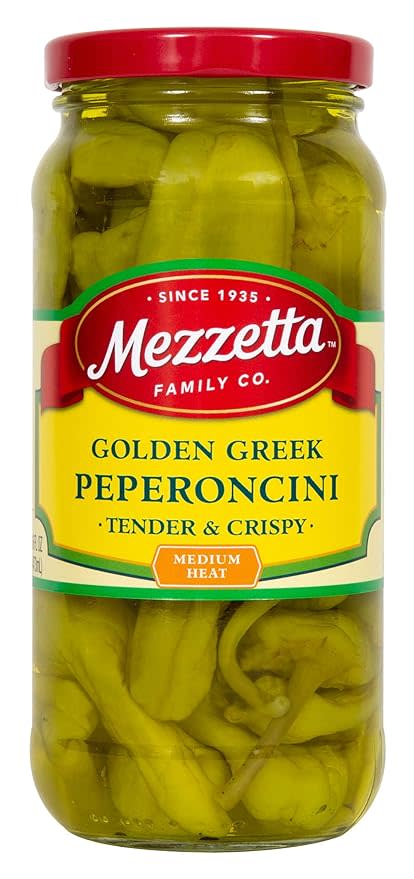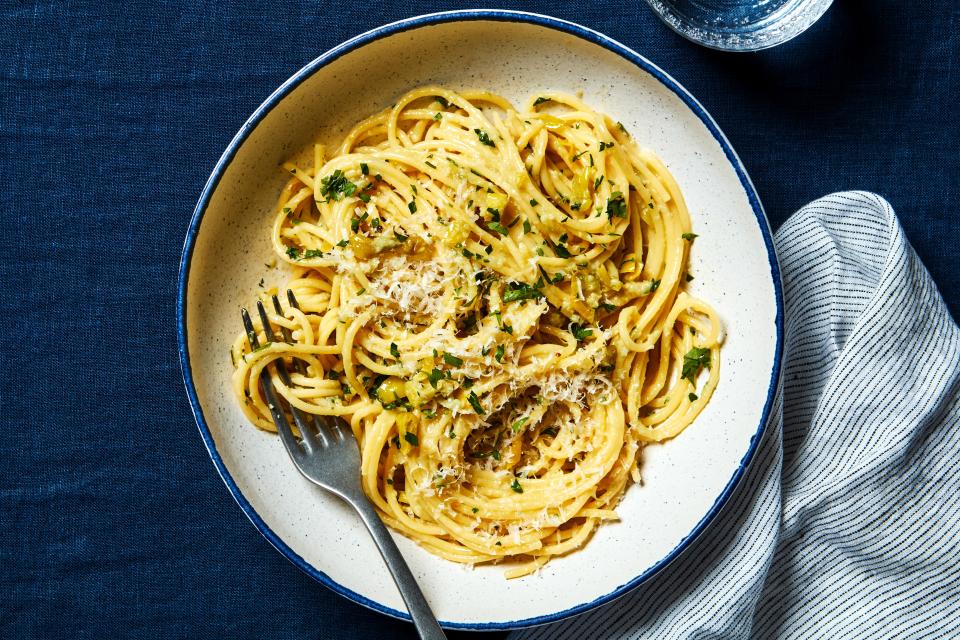For Punchier Pantry Pasta, Add Peperoncini Brine

Photo by Elizabeth Coetzee, Food styling by Rebecca Jurkevich
A good pantry pasta is a thing of beauty: Simple ingredients you might already have on hand come together in basically no time to create a filling, fuss-free dinner. While these recipes are great to keep on hand for impromptu cooking, their fatal flaw lies in the fact that they often skew bland, which makes sense given their limited ingredient list. But there’s one pantry ingredient you can add to give your weeknight pastas a bold, flavorful new life: jarred peperoncini. Yes, the very same peppers that are thrown into salads or served alongside slices of pizza can take your pantry pastas from good to great.

Pepperoncini Pantry Pasta - IG
Photo by Elizabeth Coetzee, Food styling by Rebecca Jurkevich
Whole Peperoncini
$4.00, Amazon
You’ve probably seen jars of peperoncini near the olives, pickles, and sandwich toppings at the grocery store—they’re a just-slightly-spicy variety of pepper that’s packed in a salty, vinegary brine. They are acidic, punchy, and full of in-your-face flavor. And while the peppers themselves are great, lots of people are missing out on the best part: The same brine that gives the peppers their delightfully peppy bite is the key to a quick, zippy pasta sauce.
To use the peppers in your pasta, just chop them up and sauté in olive oil with a hefty amount of minced garlic. Do not, I repeat, do not toss the brine that remains in the jar. At this point you could add red pepper flakes, diced onions, and just about any other staple you might have on hand. As the peppers cook, they wilt and caramelize, intensifying their natural sweetness and emboldening their bite. They’ll become little bursts of flavor hidden throughout the pasta.
But what’s really transformative here is the liquid in that jar. Instead of finishing the pasta with a splash of lemon juice to brighten it up, adding a glug of the peperoncini brine to the finished pasta instantly adds freshness and an additional layer of spice that makes it shine. I typically add about ⅓ cup of the brine to my finished pasta, then taste it. Depending on the spice level of the brand of peperoncini you’re using, you might need to add slightly more to taste, fine tuning the flavor by adding just a small amount at a time. The more you add, the spicier—and saltier and tangier—your pasta will be.
My go-to weeknight move is to add the brine to pasta with nothing more than the sautéed peppers, garlic, olive oil, Parmesan, butter, and a handful of chopped parsley, but this stuff can elevate just about any pasta, and add acidity without requiring you to keep fresh lemons around. The key is to add it right at the end, allowing its bright flavor to punctuate and round out the pasta. Soon you might find yourself adding peperoncini brine to other dishes too—your salad dressings, your soups, your crispy chicken thighs. It’s a pantry powerhouse.
Peperoncini Pantry Pasta
Originally Appeared on Epicurious
More cooking tricks and tips from Epicurious
Sign up for our newsletters to get great new recipes and expert tips.
Is it safe to reuse plastic takeout containers?
The most-saved recipes in the Epi iOS app this week.
Why do recipes call for unsalted butter?
How to store nuts so they don’t go rancid.
Do you really need to soak your beans?
Subscribe now to get unlimited access and the Epicurious App—cancel anytime.


